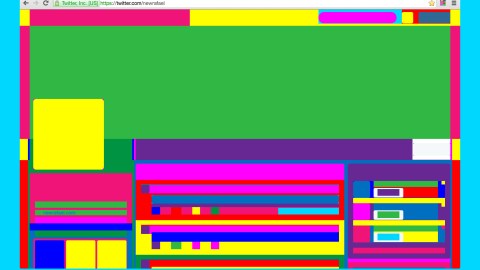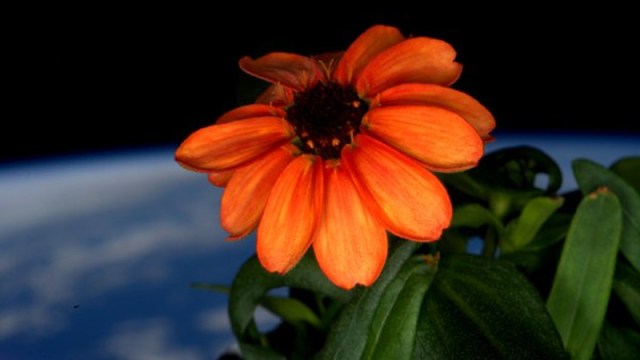If a Full Inbox Stresses You Out, Turn It into Art

Artist Rafaël Rozendaal wants users to experience the web in a new way: as an abstract art exhibit. Through a Chrome extension, called Abstract Browsing, which anyone can download for free, users can turn a busy email inbox into an abstract canvas of colors and shapes. A webpage filled with text, ads, and links is transformed into a soothing composition of blocks and colors, unified within a browser window.
The extension can be turned off at any time to resume normal operations once you’ve had your fill. The program maintains the basic structure of the website, erasing text and images — replacing these blocks of content with 10 colors pulled by a preset palette.

Since Rozendaal released the extension back in 2014, he’s been taking screenshots of his favorite websites. Recently, he’s made this archive of abstract pages into a series of physically woven tapestries, on show at the Steve Turner gallery in LA.
He chose to weave the tapestries in a special way, using a Jacquard loom.
“Jacquard weaving is considered an important step in the history of computing,” Rozendaal explained in an interview with The Creators Project. “The punch cards used for the fabric patterns in the weaving were invented in 1801. This is, to my knowledge, the first digital image format. It is binary information that is mechanically rendered.”
Abstract Browsing (Pinterest) opens this Saturday @steveturnerla pic.twitter.com/KJeNTy565V
— Rafaël Rozendaal (@newrafael) January 7, 2016
When seen up close, the tapestries have a kind of warm, low-res, digital feel that Rozendaal explains was intentional. "My goal was to create colors that appear to vibrate because they are built up from smaller parts, like dithering in a .gif file."
Rozendaal shows us what a website looks like once it's boiled down to its most basic packaging. But is this art?
Milton Glaser told Big Think in an interview once that "if you look at a work of art, you can re-engage reality once again, and you see the distinction between what you thought things were and what they actually are."
***
Natalie has been writing professionally for about 6 years. After graduating from Ithaca College with a degree in Feature Writing, she snagged a job at PCMag.com where she had the opportunity to review all the latest consumer gadgets. Since then she has become a writer for hire, freelancing for various websites. In her spare time, you may find her riding her motorcycle, reading YA novels, hiking, or playing video games. Follow her on Twitter: @nat_schumaker
Photo Credit: Abstract Browsing/ Rozendaal





